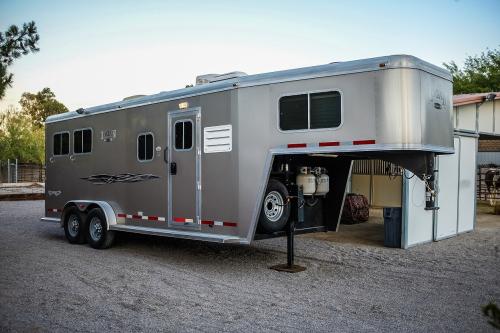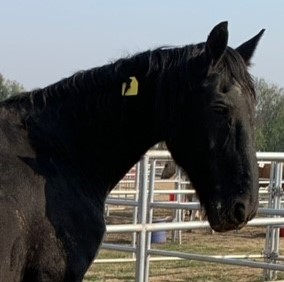Should Horses Be Turned Loose If A Fire Is Rapidly Approaching?
Read the original full article, written by Dr. John Madigan, DVM, DACAW, Distinguished Professor-Emeriti, at our Disaster Preparedness Resources webpage: https://ceh.vetmed.ucdavis.edu/health-topics/disaster-preparedness.
The best method for preventing injury to horses during a wildfire is to evacuate early. The other option is to shelter in place, which includes the possibility of having to decide whether to turn horses loose if the fire changes speed or course and evacuation is no longer an option. Turning horses loose comes with a new set of risks to consider.

Evacuation
There is no substitute for a well thought out and rehearsed evacuation plan. Evacuate early, if possible. The roads may close and you will not be allowed access if you wait too long.
Even with the best plans, several factors can impede evacuation efforts. These include:
- Lack of halters and lead ropes
- Not enough people with skills to quickly and safely catch, halter and lead horses
- Horses that are not trained to load
- Not enough trailer space for the number of horses on the premises
- Young horses, mares and foals, and stallions, which complicate handling and loading
- Flames, heat, and smoke, which make conditions unsafe for humans
Shelter in Place
If evacuation becomes impossible, sheltering in place is the remaining option. Remember that if you are not safe sheltering in place, your horses are not safe either. If you must shelter in place, take the following actions:

- Clear brush and debris at least 100 feet in all directions.
- Attempt to obtain a fire suppression team to defend the space or determine if it is defensible.
- Remove horses from all nearby structures.
- Provide food and water.
- Turn on a generator for power and run sprinklers in fields where horses may be sheltered.
- I.D. the horses:
- Paint, tag, collar, phone number written on hooves, cattle ear tags placed in mane, etc.
- Remove blankets.
- Hose off horses prior to placing in a large field.
Turning Horses Loose
When a horse facility is in immediate danger with no defensible space and no chance for evacuation, opening field and pasture gates, stalls doors, and removing any other restraints will potentially allow horses to escape the flames. If it comes to this, take the following actions:
- Attempt to create and direct horses to a secondary confinement area.
- Take precautions to prevent horses from reentering the area. They may attempt to return to a familiar place even when flames are present.
- Immediately notify 911 of loose horses so first responders in the area can be alerted. First responder entry could be impeded by loose horses on driveways or roadways.
- Put out a call for horse groups to converge at a distant location, but close to where loose horses are, and to bring halters, grain buckets to facilitate catching horses, and trailers.
Once horses are out of your control, safety issues may arise for both horses and people in the area. Horses could enter major roadways with traffic and be hit by evacuating or responding vehicles, potentially injuring the horse(s) and people in the vehicle. Horses could suffer trauma from falling while running on slippery roads, kicking other loose horses, running through fences or barbed wire, and obtain other flight-related injuries. Horses that are wearing halters (especially those made of nylon) could suffer facial injuries from excessive heat or hook halters on fences, posts, and other objects. However, horses that are wearing halters are easier to catch, so breakable leather halters or ID collars are preferable whenever possible.
Prevent the need to turn horses loose under threat of injury by fire
- Know your county's equine evacuation plan(s).
- Become an active member of the local evacuation and disaster response team.
- Train horses to load, practice evacuation prior to fire season, and develop a phone tree for others with trailers.

Encountering Loose Animals
If you encounter loose horses, the following actions are recommended.
- DO restrict the area where the loose animals can travel by closing gates as soon as possible.
- DO direct loose animals to a fenced area, allow time for them to settle, and move them when conditions are suitable.
- DO move the animals quietly and slowly using the fewest number of people possible.
- DON’T allow too many people to get involved or interfere with capture operations as it may subject people to risks and injuries.
- DON’T be in a hurry. Stay calm, move slowly, and do not encourage the animals to flee by chasing them.
- DON’T turn on sirens or lights if approaching loose horses or livestock.
- DON’T try to move horses or livestock with cars or vehicles.
Conclusion
There are humane grounds for opening confinement areas when intense fire is about to engulf a facility. In those circumstances, if horses are trapped, releasing them is appropriate. However, it is not without its own risks. Make your own decisions considering all of the factors described. Nearly everything about a wildfire carries some degree of risk. The best approach is to be prepared and evacuate early.
